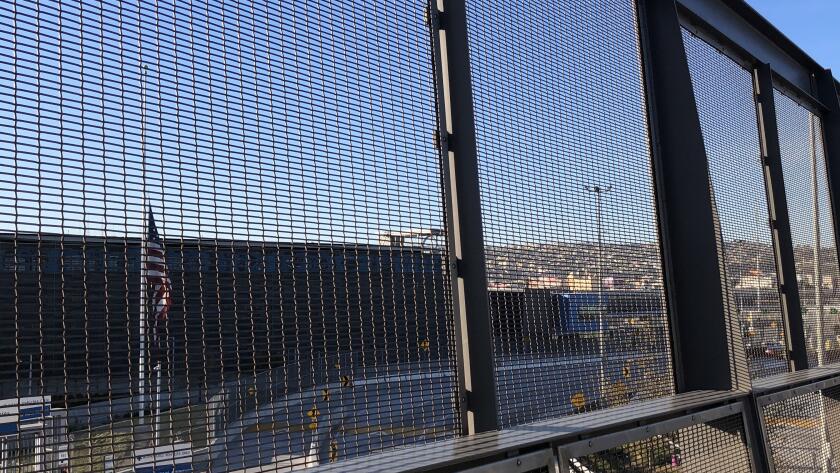Trump put migrants in border limbo. So far Biden has left them there
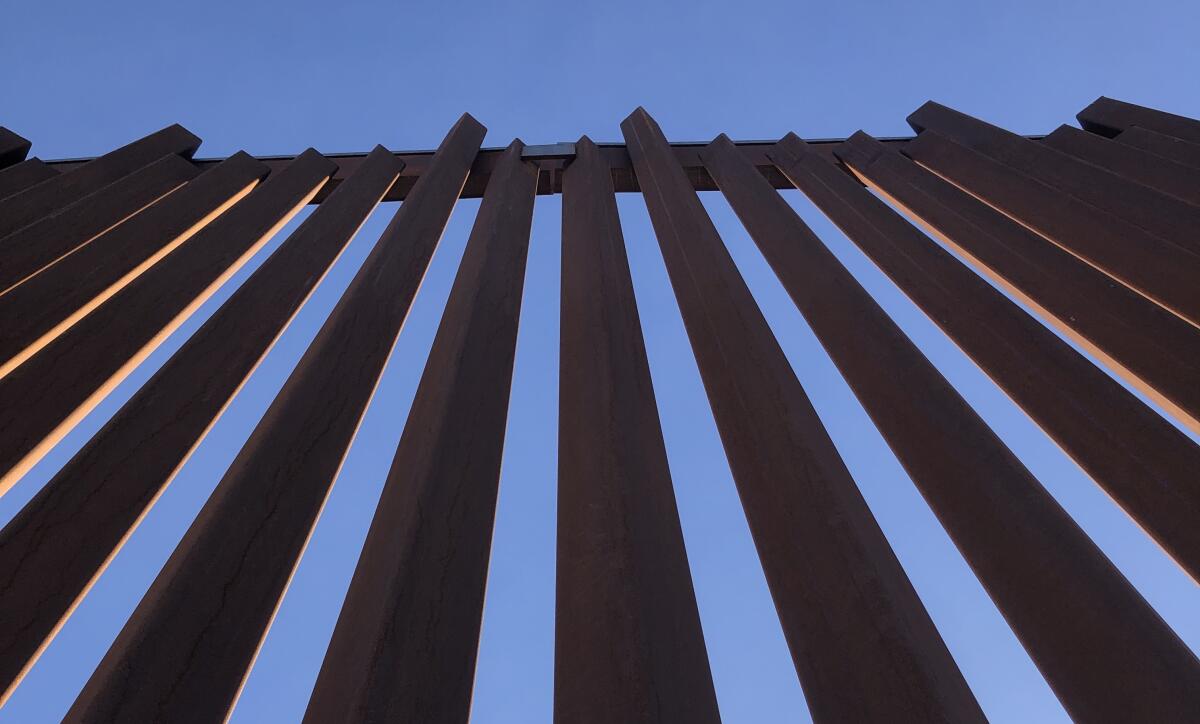
- Share via
TIJUANA — The morning sunlight streamed undisturbed over the concrete expanse known as El Chaparral, one of the busiest border crossings in the world, days before the inauguration of President Biden.
A few people hovered around the silent turnstiles that marked the official entry from northern Mexico into Southern California — and the possible pathway to a long-awaited exit from the Trump era.
Suddenly a gate opened, and Gabi and her husband rushed over to once again extend a temporary residency visa from the Mexican government. They and their three kids fled El Salvador in 2019 after her nephew was killed for refusing to join a gang. They asked for U.S. asylum. Instead, officials forced them back over the border under a Trump policy known as “Remain in Mexico.”
Their last court hearing had been set for March 2020, when the Trump administration indefinitely closed the border, citing COVID-19. Now it’s set for March 2021.
“I was very afraid of Trump,” said Gabi, who asked to use only her first name for safety. “That’s why I waited, seeking asylum here, because I wanted to do it legally.
“With Biden, I think we have a light in this darkness,” Gabi went on. “We hope he’ll let us fight for asylum inside, in a safe place for my children. I want to stop running.”
The quiet at El Chaparral belied the chaos that former President Trump’s policies have wrought across the roughly 2,000-mile U.S.-Mexico border over the last four years — and an already dangerous uncertainty about Biden’s plans to deal with it.
California’s border with Mexico is, in many ways, where Trump transformed into policy the jingoistic bluster of his 2016 campaign announcement, in which he condemned migrants as rapists and drug dealers.
Here, Trump deployed Border Patrol agents and U.S. troops ahead of the 2018 midterms. Here, and along the border, an estimated 5,000 families were torn apart, and at El Chaparral, Trump’s administration launched Remain in Mexico, ultimately forcing 70,000 asylum seekers to wait for U.S. court dates in some of the world’s most dangerous cities.
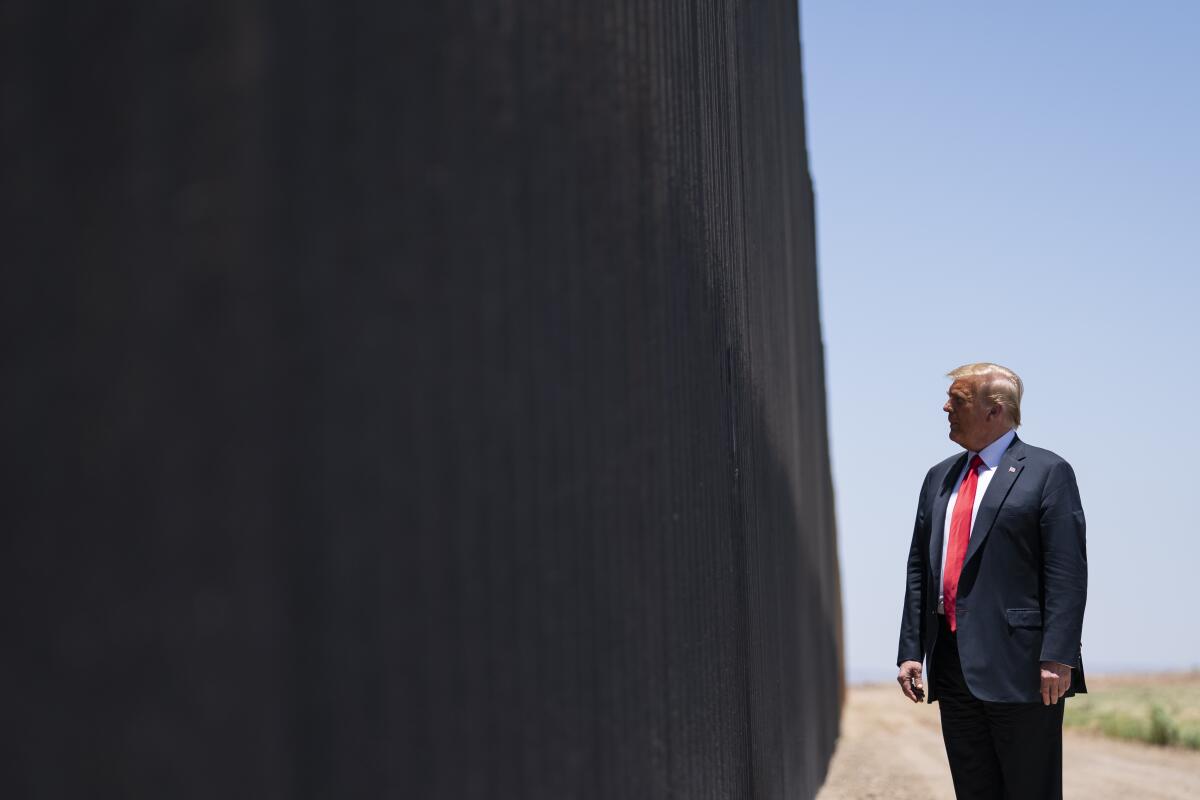
Yet leading up to Inauguration Day, few along the border, from asylum seekers to U.S. agents, had answers for how Biden will confront the most immediate challenge left to him by Trump: How to deal with about 30,000 migrants waiting in limbo, as well as thousands more heading north, amid a pandemic that Trump used to close the border.
Biden has yet to answer himself.
Rarely has a presidential transition represented such a sharp contrast in approaches to immigration and border security. And rarely has the timing been more urgent, said Savitri Arvey, a migration researcher.
“I am just deeply worried that every single day the Biden administration waits to give clear indications of what’s going to happen at the border after Jan. 20, they put more people in danger,” she said.
On his first day in office, Biden unveiled a comprehensive immigration reform proposal offering an eight-year path to citizenship for some 11 million immigrants in the U.S. illegally and green cards to upwards of 1 million DACA recipients, people with temporary protected status and farmworkers.
He also issued executive orders to rescind Trump’s travel ban on several majority-Muslim and African countries and pause border wall construction. But Biden has already begun walking back other pledges, such as ending Remain in Mexico.
On Wednesday, Biden’s Department of Homeland Security announced it wouldn’t put anyone else into the program, known officially as the Migrant Protection Protocols. But the department didn’t say what it would do with the thousands already in the program.
“Current COVID-19 non-essential travel restrictions, both at the border and in the region, remain in place at this time,” a department statement said. “All current MPP participants should remain where they are, pending further official information from government officials.”
Then came the kicker: “Please note: Individuals outside of the United States will not be eligible for legal status under the bill that President Biden sent to Congress today.”
In recent days, some 8,000 migrants traveling in caravans toward the U.S. border have been confronted by military force in Central America and Mexico. Outgoing Trump officials blamed Biden’s promises.
“Biden is in enormous political peril,” Stephen Miller, the primary architect of Trump’s restrictionist immigration policies, told The Times on Tuesday.
Alejandro Mayorkas, Biden’s pick to lead Homeland Security, said Tuesday that reversing Trump’s decimation of the legal immigration system “cannot be accomplished with just the flick of a switch.”
But thousands, like Gabi, are already at the border or on their way. Here, hope can be dangerous.
At Madre Asunta, a Catholic shelter in the hills of Tijuana, some 50 mothers and their children have spent months in this policy purgatory.
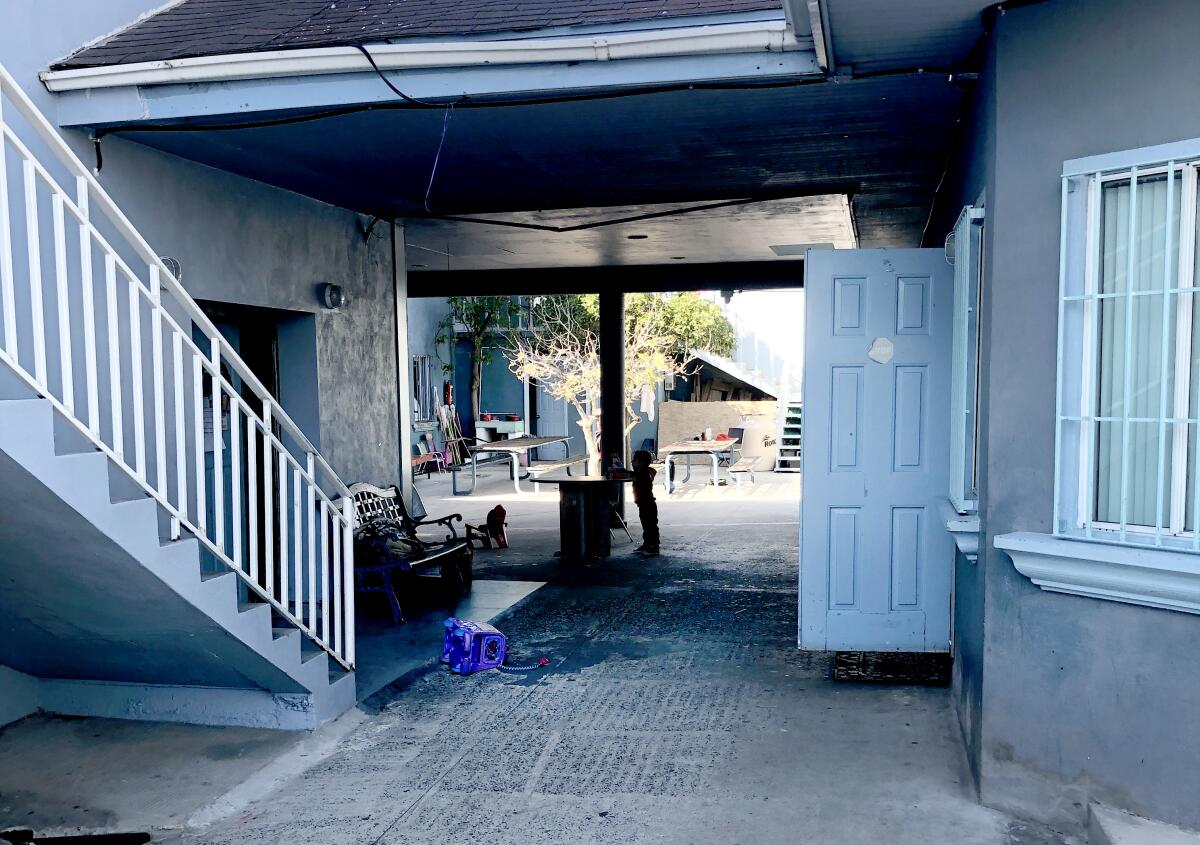
In 2019, when Trump officials apprehended more than 850,000 migrants at the southwest border, the courtyard was crowded with laundry lines and well over 100 women and children. Now it was empty, another sign of the Trump administration’s success in shutting down immigration, even before the pandemic.
Madre Asunta’s maximum stay is supposed to be two weeks, but families typically stay for months. In Tijuana, jobs and public services are scarce, rent is high, discrimination against migrants is widespread — and violence, especially against women, is rampant.
Human Rights First has documented at least 1,134 public reports of murder, torture, rape and kidnapping against asylum seekers returned to Mexico under Trump’s policies. Amid a record backlog of nearly 1.3 million immigration cases that’s ballooned under Trump and coronavirus closures, the average wait has reached almost 2½ years.
The women waiting at Madre Asunta now talk about using smugglers to cross illegally, said Salome Limas, a social worker at the shelter. Back home in Central America, some said, many more were preparing to come because of devastating hurricanes, poverty worsened by COVID-19 and the lure of a new administration. Limas expects that Biden will extend more compassion but not an open invitation.
“The border will stay closed,” Limas said. “The way of seeing the migrants will definitely change — not as enemies, but as people looking for safety in their lives.”
Mere yards from the border, at Tijuana’s Movimiento Juventud 2000 shelter, Enrique Geovanny Lopez Puac and his wife, two sons and baby daughter have been living in a tent. He said they fled north after gang members in Guatemala tried to kidnap his youngest son.
In March, Lopez Puac and his sons crossed the Rio Grande to turn themselves in to the Border Patrol and claim asylum — at exactly the wrong time. Lopez Puac said they were taken into custody to a facility he called “Donald Trump,” thinking it was named after the president. It was a Customs and Border Protection holding area in Donna, Texas.
While he was in custody, he said, an official on the phone asked him about his asylum claim and told him he had an appointment in court in 14 days. On March 20, the Trump administration invoked Title 42 under a controversial order from the Centers for Disease Control and Prevention, effectively closing the border.
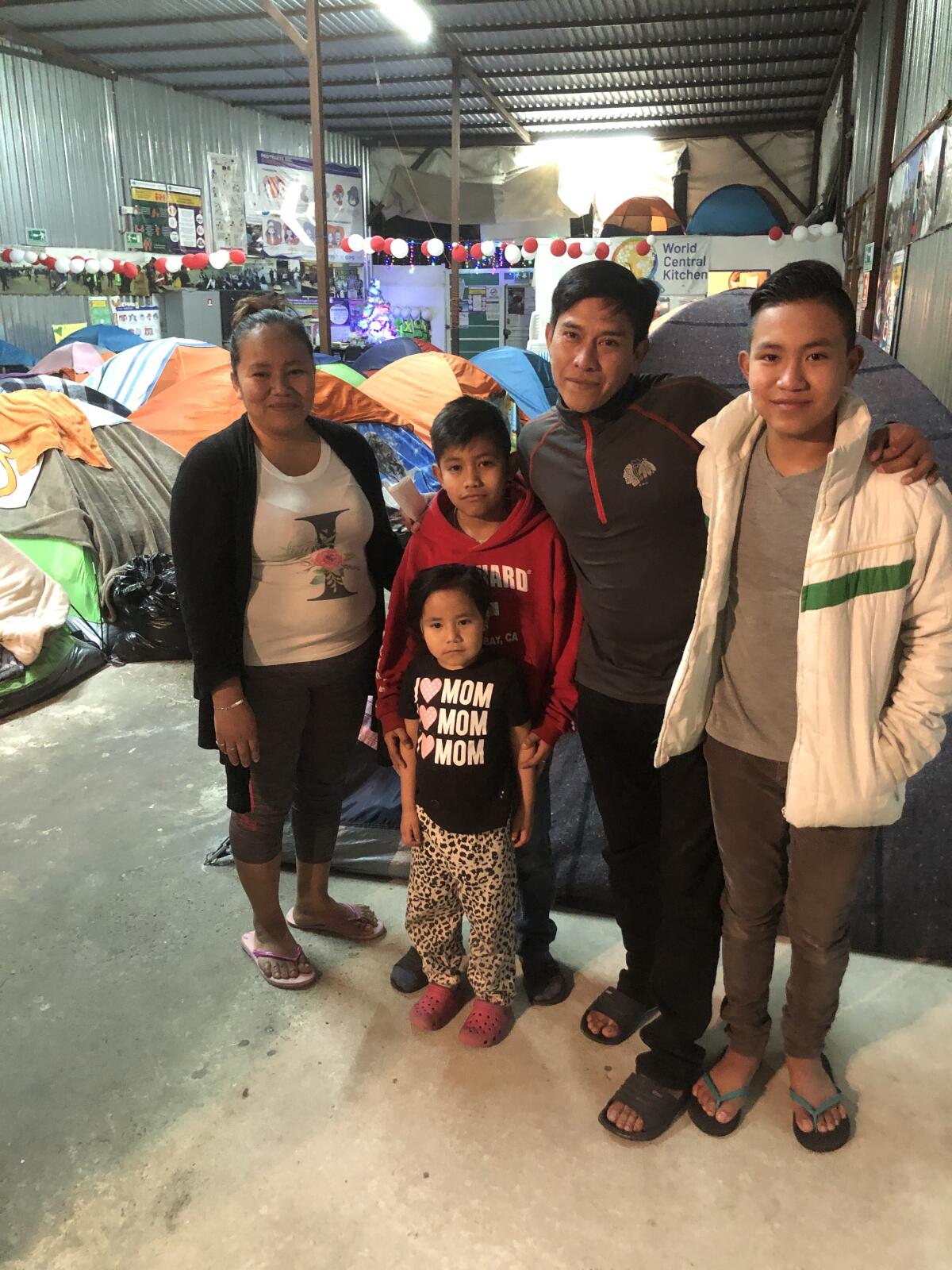
CDC officials later said that the White House pushed the move for political reasons and that it didn’t stanch the spread of COVID-19. Yet under the order, since March, the Trump administration has expelled hundreds of thousands of migrants like Lopez Puac, including many unaccompanied children and families, without due process.
Ironically, the policy appears to encourage repeat crossers. Now, the vast majority crossing are single adult Mexican males — a demographic that more closely resembles the 1980s through the early 2000s, when annual apprehensions, a rough measure of illegal immigration, routinely topped 1 million. Since the end of the Obama administration, before Title 42, asylum-seeking Central American families and unaccompanied minors had consistently made up the majority.
As for Lopez Puac, CBP officials handed him and his two sons over to Mexican counterparts, without providing them documentation, he said. The Mexican officials then took the family more than 1,000 miles south to Tapachula. His wife met them there with their 4-year-old daughter.
“In Guatemala, there is a lot of extortion — and if you don’t give them the money, they’ll kill you,” said his wife, Elvira.
Both Trump and President Obama cajoled Guatemala, El Salvador, Honduras and Mexico to essentially outsource U.S. immigration enforcement. In recent years, Mexico has deported more Central Americans than the U.S.
Biden officials on Wednesday said their legislative proposal includes a $4-billion plan to assist the Northern Triangle countries — conditioned on their governments’ ability to reduce the corruption, violence and poverty that causes people like Lopez Puac to flee. It also would restore Obama-era programs enabling Central Americans to apply for admission to the U.S. from within the region.
But confoundingly for Lopez Puac, when he and his family arrived in Tapachula, Mexican officials there gave them a transit visa granting them 14 days to get back north.
Trump took more than 400 executive actions on immigration, including a flurry in his last weeks. But Title 42 may have had the furthest-reaching effects — and Biden has not yet committed to ending it.
“What people don’t realize is that Title 42 is everything — it’s a complete closure of the border,” said Lee Gelernt of the American Civil Liberties Union, whose suit now faces the Biden administration. “There’s no question that the Title 42 policy is unlawful. And yet when Biden comes in, he may leave it.”
On another day last week, in San Diego’s border district of San Ysidro, some 20 miles north of the shelter, three Border Patrol agents stared into the glare where the rust-colored border wall disappeared into the Pacific Ocean — modernized by the second Bush administration and reinforced by Obama’s.
The San Diego sector agents said the new sections of 30-foot concrete-and-rebar-filled bollards, sensors, cameras and roads put in under Trump have made their job easier by slowing down smugglers and illegal crossers and enabling agents to respond faster.
“There’s no such thing as a bad wall,” said Supervisory Border Patrol Agent Jeff Stephenson. “But is it miles? Or is it what’s the most important thing operationally?”
At the same time, the agents said the beefed-up barrier and Title 42 were pushing migrants to cross in more remote and dangerous areas of San Diego County and over the ocean. For years, the San Diego sector and Homeland Security Air and Marine Operations, or AMO, have seen everything from lone swimmers to yachts and dangerously overloaded pangas employed in attempts to smuggle migrants or drugs across international waters.
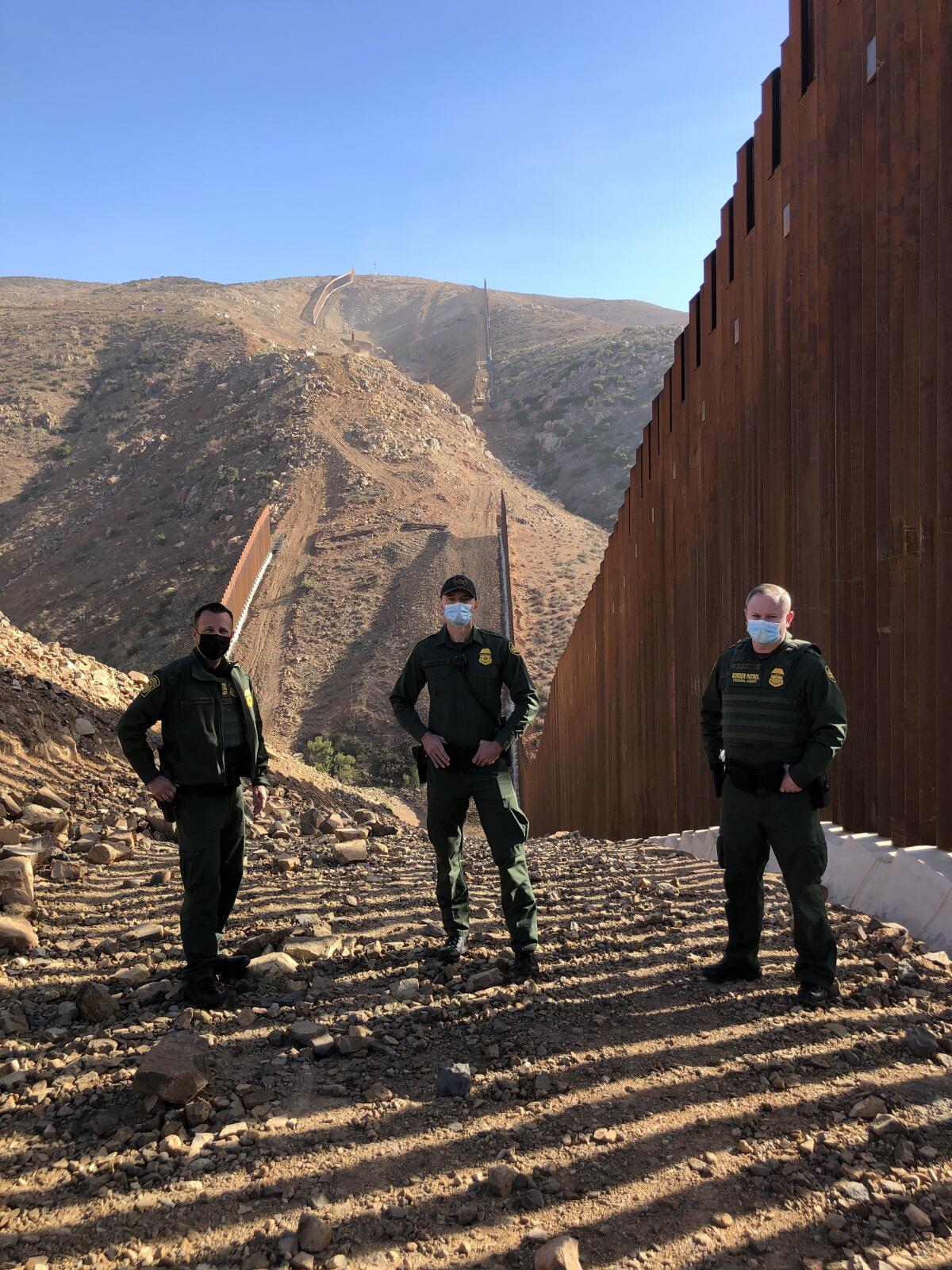
Recently, they say, attempted migrant crossings off the coast of California, some as far north as L.A., have reached record highs.
“I would say the past year has been the busiest for our region that I can remember,” said Kris Goland, a marine supervisory agent.
Increasingly, cartels are diversifying their enterprises. Faced with Title 42, coyotes give migrants as many tries as they need, law enforcement officials say — especially if they’re paying up to $25,000 for the more complex water crossing.
Asked where the pangas are launching in Mexico, Border Patrol Agent Gary Richards, who specializes in intelligence, said that according to their sources, it was three areas: Rosarito, Ensenada and Popotla, a small fishing village nearby.
In Popotla, a woman named Sarita with cropped hair and heavy eyeliner spoke over her grill and loud music playing at the neighboring seafood stands.
Switching between Spanish and English, Sarita, who says she is Mexican and Native American and went to school in Arizona, recounted a recent cross-border trip to Walmart, where a woman barked at her, “Go back to your country.”
“I told her, ‘I didn’t cross the border; the border crossed me,’” Sarita said.
Along with its fresh seafood, Popotla once had a reputation as a launching point for smugglers. But Sarita insisted that the village, though struggling under COVID-19 border restrictions, had not turned back to that business.
“That happens other places,” she said. “Not here.”
- Share via
President-elect Joe Biden vowed “not another foot” of border wall will be built under his administration. But Trump leaves Biden nearly 300 miles of border barrier in some stage of construction, according to Customs and Border Protection.
The border is still shifting, unstable, contested. Trump won the White House boasting he’d build “a big, beautiful wall” spanning all 2,000 miles and make Mexico pay for it. Neither has happened — but the project is still underway.
Outside the U.S. border town of Calexico, more than 120 miles east of Tijuana, five days before Trump left office, a construction worker approached Border Patrol agents standing in the shadow of a new section of wall.
“There’s rumors they’re going to shut everything down,” said the worker, Bradley Jennings. All the material hauled out to the wall site would have to be removed, he said. “We’ll work until the last minute.”
Biden has vowed that “not another foot” of border wall will be built under his administration, and on Wednesday, he issued an executive order to freeze construction.
But it won’t be easy — Trump left Biden 211 miles of border barrier under construction, according to Customs and Border Protection.
In the end, Trump replaced hundreds of miles of existing fencing and added to the total only about 50 miles that weren’t there when he entered the White House. The majority of the 654 miles of border wall predating Trump was built under Obama.
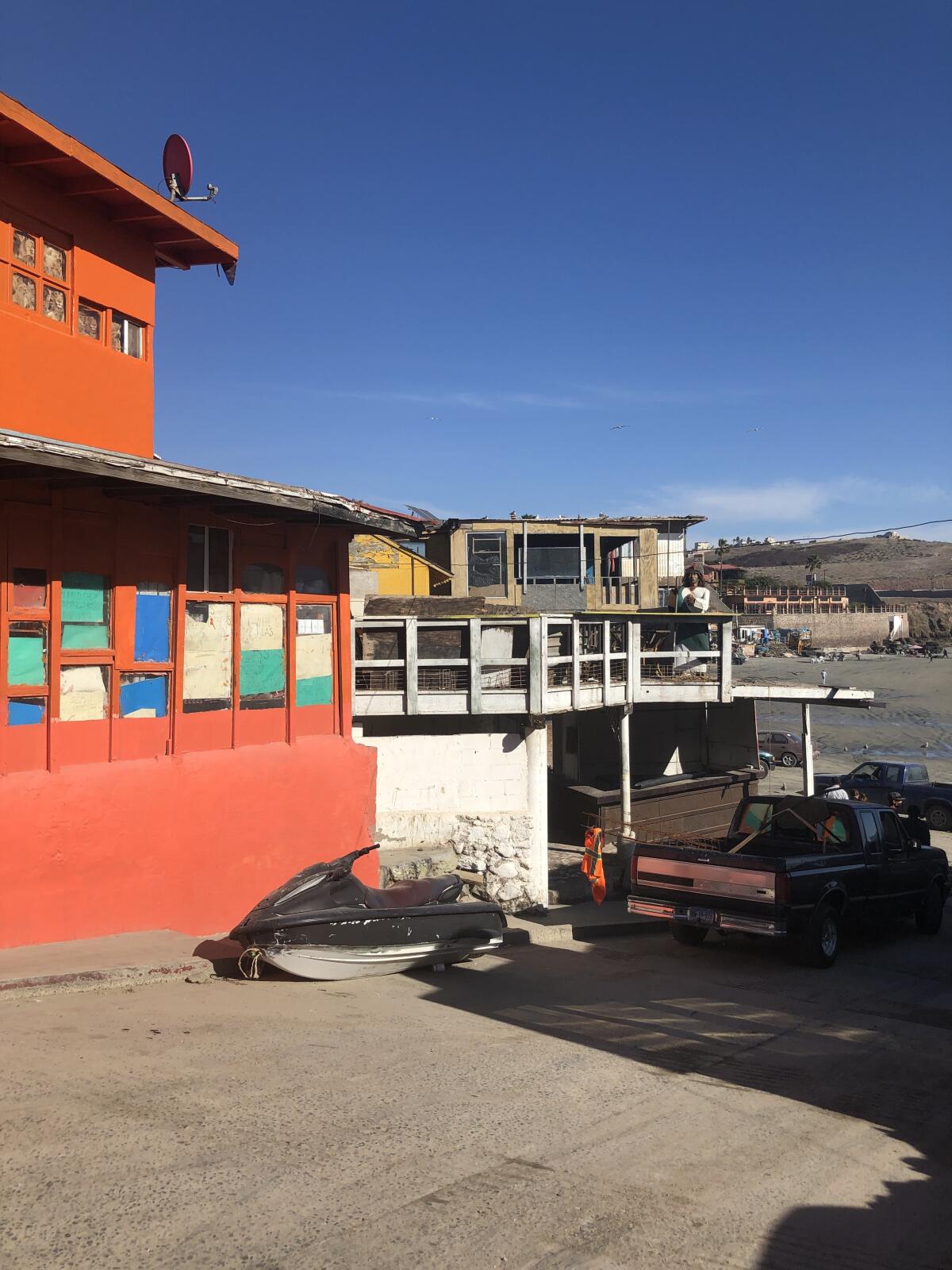
Last Friday, Trump extended a declaration of a national emergency at the U.S.-Mexico border for another year. On Wednesday, Biden ended it.
Biden also said he’d stop government lawsuits against private border landowners and invest in “smart border” infrastructure instead. But Biden officials have not yet said exactly what they’ll do with ongoing border construction projects, save for reviewing their legality. Canceling contracts and scrapping material could cost the government up to $700 million, according to an Army Corps of Engineers estimate — but halting construction on Day One could also save $2.6 billion.
Gary P. Nabhan, a conservation biologist at the University of Arizona, has reported to the federal government what he says is corruption in the wall’s construction, potentially benefiting cartels. But he’s also afraid what could happen if Biden immediately halts construction.
“Do you think that just because of an administration change, and if the contracts get canceled, that they’re going to start doing things legally instantly?”
At the Calexico port of entry, plainclothes agents from the Border Patrol’s intelligence unit interviewed a 20-year-old Mexican man from Guerrero. Agents took him into custody at an interior checkpoint near El Centro. They’d processed him there and would soon take him back to Mexico under Title 42.
As soon as this week, Biden’s administration may have to decide whether to continue an appeal by the Trump administration that challenges a federal judge’s ruling that Title 42 can’t be applied to unaccompanied children. If the Biden administration continues to implement Title 42, it will also be doing so with Border Patrol agents who have widely different understandings of how to carry it out.
In San Diego, Stephenson, the supervisory agent, said agents had been instructed not to proactively ask migrants about their potential fears of being returned, adding that the migrants have to specifically volunteer that they fear torture, a much higher legal bar.
But in Calexico, Supervisory Border Patrol Agent D. Kim said: “There’s this big misconception that because of Title 42, you can’t claim asylum…. If somebody says, ‘They’re going to hurt me, kill me,’ really what they’re saying is, ‘I have credible fear,’ and of course we’re going to review it.”
Trump gave the Border Patrol unprecedented power over the fate of migrant children and asylum seekers amid record vacancies at an increasingly politicized Department of Homeland Security.
Biden has resisted calls to disband Immigration and Customs Enforcement or Homeland Security. Officials said he’d direct funding instead toward better training for Border Patrol agents and the department’s internal investigations.
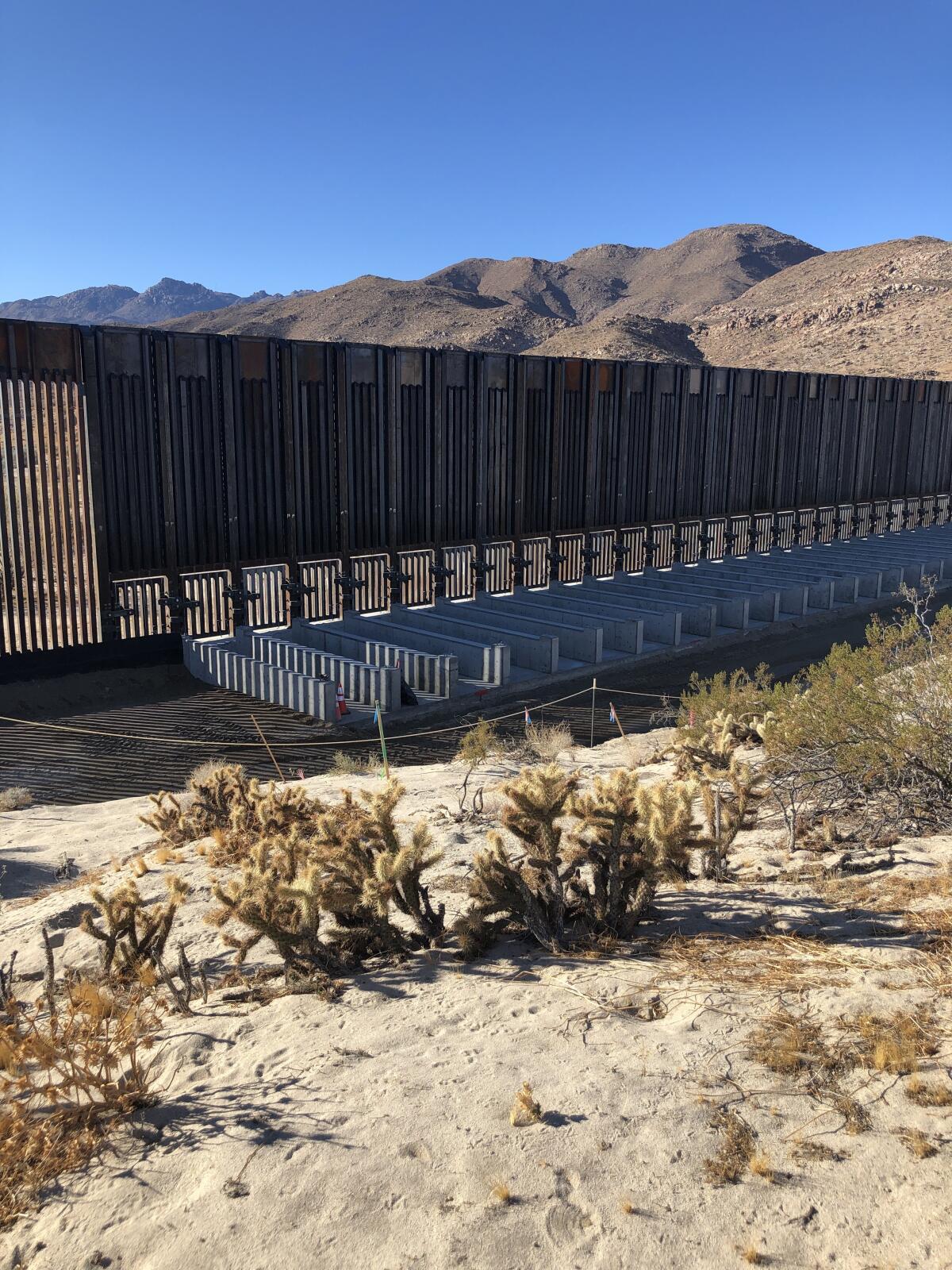
Now, Trump’s outspoken political appointees are gone, and the 99% of Customs and Border Protection employees who are career public servants will remain under a new administration with near-opposite priorities.
“It’s like the campaign trail,” said CBP spokesman Macario Mora. “They make a lot of promises, but until they actually enact the policies, we won’t know.”
Special correspondent Gabriela M. Cordova contributed to this report.
More to Read
Get the L.A. Times Politics newsletter
Deeply reported insights into legislation, politics and policy from Sacramento, Washington and beyond. In your inbox three times per week.
You may occasionally receive promotional content from the Los Angeles Times.
